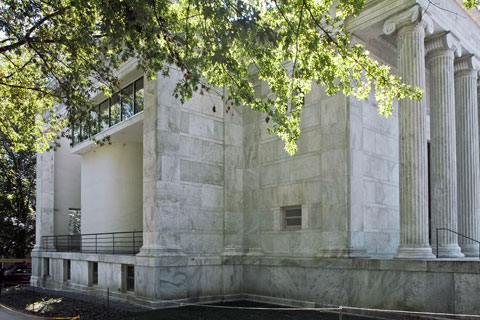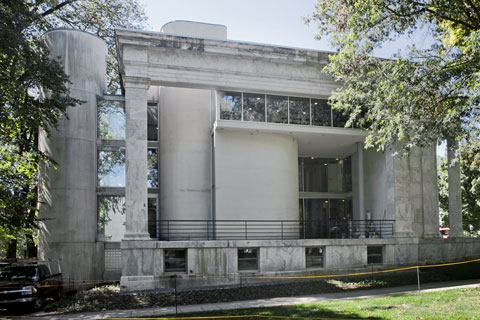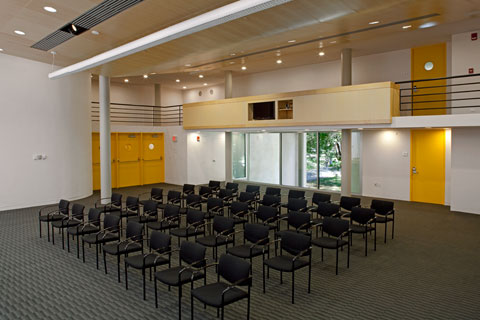
Whig Hall, Princeton University — © Brian Rose
Charles Gwathmey, who died a short time ago, became the quintessential establishment architect. In the wake of less than stellar projects like the Sculpture for Living at Astor Place and the US mission to the United Nations, it is easy to forget that he, and his compatriots, the New York Five, once represented the architectural avant garde.

Whig Hall, Princeton University — © Brian Rose
On Saturday I photographed one of Gwathmey’s early projects, a modernist intervention into a late 19th century temple-like structure housing a debating club on the Princeton campus. A fire in 1969 left a gutted marble columned shell, and an opportunity for the young firm of Gwathmey-Siegel. One wall of the building was opened up and a deceptively simple composition of shapes arranged on a plan of nine squares was, seemingly, slid in. It was a magical demonstration of architectural sleight of hand.
My assignment was to photograph recent renovations and adaptations to the nearly forty year old interior. While there I made some quick snapshots of the exterior–virtually unchanged in the renovation. The original appearance of the interior spaces has been largely retained with blond wood elements inserted by the preservation architects Farewell Mills and Gatsch.

Whig Hall, renovated interior — © Brian Rose
Gwathmey’s design shows great restraint, in part necessitated by the requirement to maintain the esthetic unity of the original classical building. It gives testimony to the relationship between the precepts of classicism and modernism, something wholly unappreciated by the likes of Tom Wolfe who lambasted Gwathmey and his fellow “whites” in his essay From Bauhaus to Our House. After the success of Whig Hall and his brilliant houses on Long Island, Gwathmey chose to pursue an ambitious commercial career with the compromises and pitfalls inherent in such an undertaking.
But the integrity of these, often small, early projects, remains undiminished.